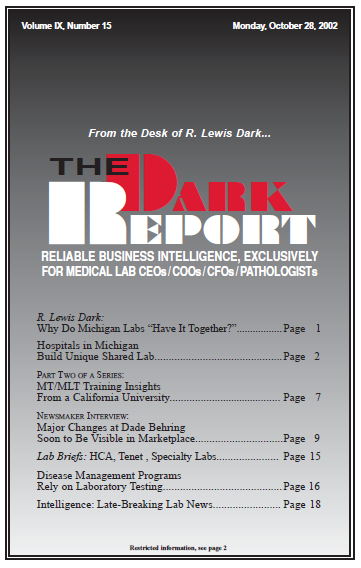CEO SUMMARY: Predictions are that 30% of large corporations will offer disease management programs for their employees by the end of next year. Disease management seems to be the next form of managed care, where prevention and early detection are the primary goals. Laboratories should be alert for opportunities to add value to these programs. …
Disease Management Relies On Lab Testing Read More »
To access this post, you must purchase The Dark Report.


